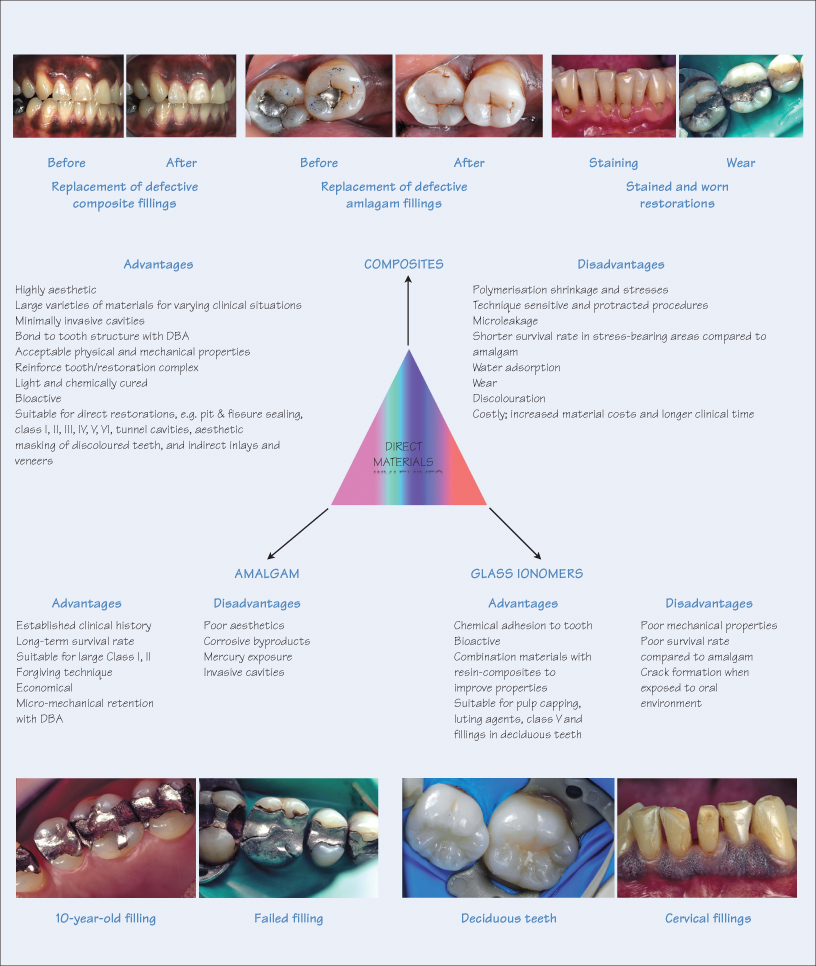28
Choice of Materials for Direct Restorations

Material selection for intracoronal direct restorations is a daunting task. At present, there is no material on the market that is a true substitute for dentine and enamel, and a compromise is usually necessary depending on the prevailing clinical situation. Most intracoronal cavities are restored using a direct technique. However, inlays are also possible using an indirect technique. The performance and survival of any direct restoration is multi-factorial, depending on the location of the tooth, type of tooth, restoration design and size, number of surfaces involved, operator factors (experience, dexterity and technique), patient factors (age, attitude to dental care, oral hygiene) and the choice of material. The main reasons cited for failure are secondary caries, fractures, discolouration, marginal discrepancies, wear or endodontic involvement.
Palliative Dressings
The most popular temporary palliative dressing is zinc oxide eugenol. Zinc oxide powder is mixed with eugenol liquid to form a condensable putty. Care is necessary if the definitive filling is resin-based since eugenol retards the setting reaction of most resin-based composites.
Silver Mercury Amalgam
The use of silver mercury amalgam dates back to the beginning of the last century when Black first described his classification of dental cavities. Dental amalgam is a mixture of silver alloy powder mixed with mercury, creating a condensible slurry that solidifies at intra-oral temperature. Amalgam, unlike composites, is a relatively forgiving material, not dependent on stringent clinical protocols. Its use is still ubiquitous, with longer survival rates (compared to composites) for large direct restorations in posterior, load-bearing teeth. However, recent concern about low-level mercury exposure is scientifically unfounded, but remains contentious for many patients. Some European countries have banned amalgam use alt/>
Stay updated, free dental videos. Join our Telegram channel

VIDEdental - Online dental courses


